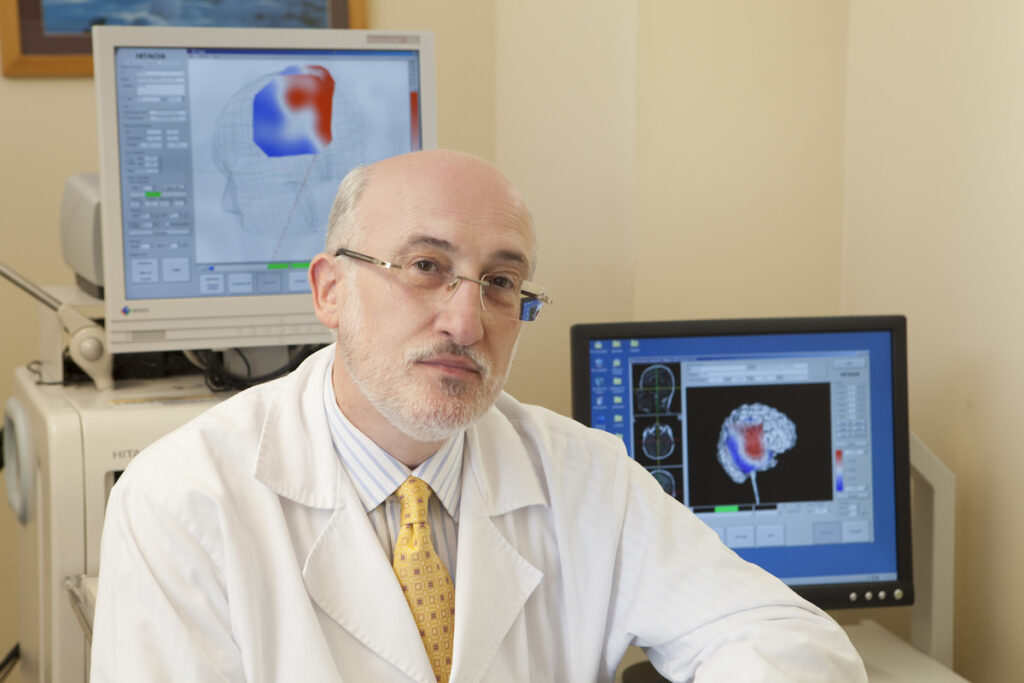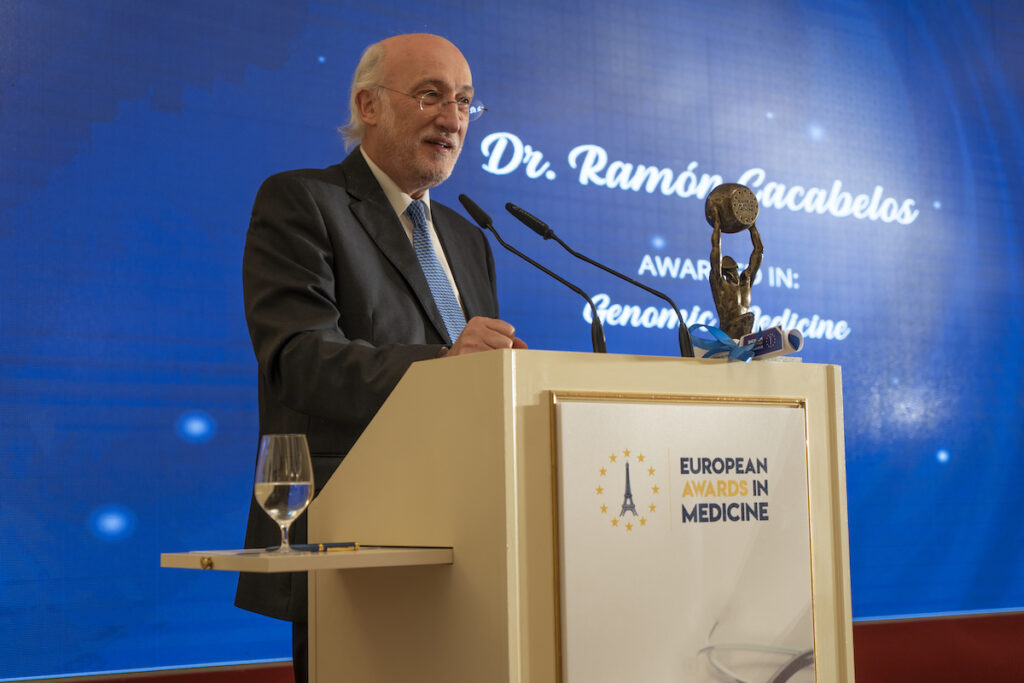President's Message

Message from the President
The World Association of Genomic Medicine (WAGEM) was founded in 2008 in the city of La Coruña (Spain). The founding act of WAGEM was held on December 12-13, 2008, with the Presidency of Honor of their Majesties the Kings of Spain, and the endorsement of national and foreign authorities, 40 University Rectors, 20 Presidents of Medical Colleges, 15 Presidents of Pharmaceutical Associations, 8 Presidents of Royal Academies and 28 Presidents of Medical Societies. Keynote speakers at the meeting included Urs Meyer (Switzerland), John Cockcroft (UK), Filippo de Braud (Italy), Gerardo Jimenez (Mexico), Masatoshi Takeda (Japan), Marvin Edeas (France), Francesco Marotta (Italy), Allen Roses (USA), Munir Pirmohamed (UK), Ian Hall (UK), and Amalio Telenti (Switzerland). The WAGEM Scientific Committee promised to launch a Pharmacogenomics program within 3-4 years that would culminate in 2012 with the publication of the first global Pharmacogenomics Guide.
Challenges of Genomic Medicine
Health paradigms have undergone a drastic transformation over the last century. At the ,beginning of the century, infectious diseases were the leading cause of mortality ,worldwide. However, we have seen a growing prevalence of degenerative diseases in advanced societies, which have affected a broad range of morbidity and mortality rates. Infectious diseases continue to be a prevalent and global health problem, both in, developed and developing countries, as evidenced by the recent COVID pandemic, which, affected the entire world without respecting geographical or ethnic barriers. Population ageing is also affecting less strong economies. In countries with intermediate economic resources and medium-low wages, dementia is the leading cause of disability, with a fractional prevalence of 21.1%, followed by stroke (11.4%), limb injuries (10.5%), arthritis (9.9%), depression (8.3%), visual problems (6.8%) and gastrointestinal disorders (6.5%). Depression is becoming a serious health problem around the world. The leading causes of death in developed countries are cardiovascular diseases (25-30%), cancer (20-25%) and nervous system disorders (10-15%). Since 1818, 2.5 million papers on cancer (more than 500,000 references on cancer genetics) have been published; 1.6 million articles on cardiovascular diseases have been published since 1927 (150,000 references on cardiovascular genetics), and 1.01 million articles on brain disorders have been published since 1893 (130,000 references on genetics of nervous system disorders). The growth of the senile population is a phenomenon common to developed and developing countries. This demographic shift poses a significant threat in terms of disability and social and health spending. In the United States, the leading causes of death are heart disease (200.2/100,000), cancer (180.7/100,000), and stroke (43.6/100,000). Dementia is becoming one of the main health problems. Over 20% of patients with Alzheimer’s disease, the leading cause of dementia, have hypertension, 25% are diabetic, 50% are hypercholesterolemic, and 23% are hypertriglyceridemic; more than 25% show high levels of GGT, 5-10% suffer from anemia, 30-50% show cerebrovascular alterations, and more than 60% have an abnormal electroencephalographic pattern. There are important differences between men and women, indicating a gender-related influence on the phenotypic expression of the disease. Elderly patients may consume between 6 to 12 different medications each day, with the consequent increased risk of adverse effects due to potential drug interactions.
Diseases of the nervous system represent a typical paradigm of health inefficiency in most countries. The annual cost of brain diseases in Europe is €386 billion, with €135 billion of direct costs (€78 billion in revenue; €45 billion in outpatient costs; €13 billion in pharmaceutical spending), €179 billion in indirect costs (lost working days, productive losses, permanent disability), and €72 billion in direct non-medical costs. Mental disorders account for about €240 billion (62% of total cost, excluding dementia), followed by neurological disorders (€84 billion; 22%). In addition to their personal and socio-family impact, most brain diseases pose a major challenge to society and the scientific community: (i) these pathologies pose a significant epidemiological and socioeconomic problem and deleteriously impact family psychology and harmony; (ii) most of these diseases are considered «complex diseases» with unclear etiopathogenesis; (iii) they are difficult to diagnose, and there are no reliable diagnostic biomarkers for almost all of them; and (iv) treatment options are complicated and ineffective.

The World Guide of Pharmacogenomics
The World Guide of Pharmacogenomics (WGPGX) is the culmination of a multidisciplinary effort spanning over 5 years. Many individuals participated in this project, and in addition to contributing their professional experience, they were tasked with tracking the primary databases worldwide and reviewing thousands of works in the fields of genetics, genomics, pharmacology, metabolism, therapeutics, and pharmacogenetics. Their goal was to systematize the available knowledge about pharmacogenomics into an interactive, database and create a useful resource for doctors, geneticists, pharmacologists, pharmacists, molecular biologists, researchers, health professionals, regulatory agencies, health administrators, and all those who are willing to train, learn and understand the keys to practical and effective pharmacogenomics.
The WGPGX is divided into 5 parts: (i) Drugs, (ii) Genes, (iii) References, (iv) Appendix, and (v) Index.
The Section on Drugs includes 1,395 pharmaceuticals, arranged alphabetically. Each drug entry includes the following information: Generic Name, Trade Name (in 27 European countries, North America (Canada, USA), Latin America, and Asia (Japan)), Drug Combinations, Chemical Structure, Drug Category, Mechanism of Action, Therapeutic Use, Alternative Uses, Implications in Pregnancy and Lactation, Contraindications, Dangers and Precautions, Adverse Reactions (cardiovascular, cerebral/nervous, dermatological, endocrine, metabolic, gastrointestinal, genito-urinary, hematological, hepatic, loco-regional, neuromuscular, skeletal, renal, respiratory, miscellaneous), Pharmacogenetics (risk genotypes, genes related to drug metabolism, substrate condition, inhibitor or inducer), Drug Interactions, Nutritional and Nutraceutical Interactions, Dosage, Pharmacokinetics and Pharmacodynamics (absorption, distribution, protein binding, metabolism, bioavailability, half-life, excretion), and Special Considerations (diet, age, sex, monitoring).
The Genes Section includes 447 genes of pharmacogenetic relevance. Each entry contains the following headings: Gene Name, Alternative Names, Symbols, Locus (chromosomal localization), Pharm GKB and OMIM Codes, Gene Structure, RNA, Protein, Function, Related Diseases, Related Drugs (Major Substrates, Minor Substrates, Potent Inhibitors, Moderate Inhibitors, Weak Inhibitors, Inducers), Animal Models, Allelic Variants, Select SNPs, Evolution, Genomics, Pharmacogenomics and Drug-Gene Interactions.
The References Section provides 2 categories of references: (i) Websites and International Databases, and (ii) approximately 20,000 bibliographic references that are alphabetically sorted by author and gene, selected from a global pool of more than 100,000 reviewed references.
The Appendix comprises 4 sub-sections: (i) Drug Classification, (ii) Genes and Diseases (alphabetical classification of genes related to specific diseases), (iii) Diseases and Genes (alphabetical classification of diseases associated with specific genes), and (iv) Pharmacogenetic Synopsis (alphabetical classification of drugs with the genes potentially involved in their pharmacogenetics).”
The index comprises approximately 52,000 entries, which are divided into 5 sections. These include (i) Drugs (7,750 entries), (ii) Trade Names (31,750 entries), (iii) Pharmaceutical Categories (1,891 entries), (iv) Genes (4,450 entries), and (v) Diseases 9,200 entries).
It is evident that one of the primary challenges in implementing Personalized Medicine, based on the knowledge of Genomics and Pharmacogenomics, is the lack of education and training among health professionals.
WAGEM aims to become the common home that welcomes and serves all professionals who are seeking to deepen their understanding of genomics, epigenetics, pharmacogenetics, and pharmacoepigenetics, and who wish to be part of a committed community.

Ramón Cacabelos, M.D., Ph.D., D.M.Sci.
President
Professor & Chairman of Genomic Medicine
